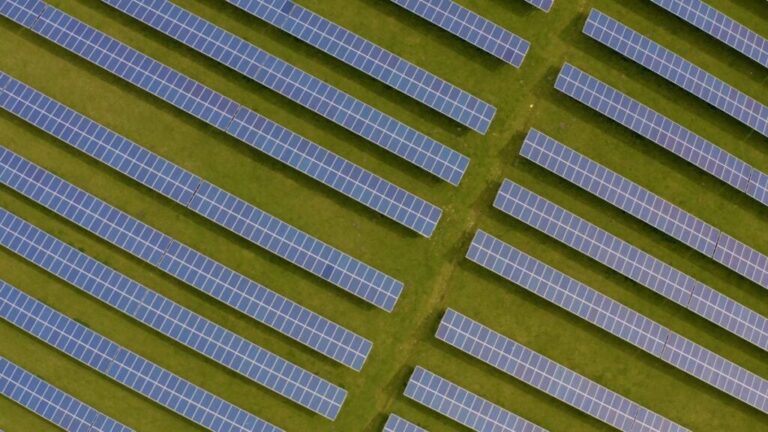The latest solar energy statistics from the Department for Energy Security and Net Zero (DESNZ) have revealed that Britain now has 17GW of installed solar capacity.
At the end of October 2024, Britain had a total of 17.2 GW of solar generation capacity, an increase of 1 GW or 6.3% since October 2023. In October 2024, 76 MW of capacity was added across 20,102 new solar installations. Of this, 73% were residential, which amounts to 58 MW of the added installed capacity. This broadly reflects the solar trend in Britain, where the majority of solar installations are domestic. However, domestic installations only make up around 30% of total UK capacity, with around 5.2GW of solar energy coming from residential roofs.
At the end of September 2023 (Q3 2024), at least 45% of the UK’s solar capacity, totaling 7.71 GW, was from ground-mounted or stand-alone solar installations, including two operational solar PV power plants accredited under the Contracts for Difference (CfD ) mechanism. However, DESNZ estimates that around half of unaccredited UK capacity comes from ground-mounted installations, meaning around 55% of total UK solar capacity comes from ground-mounted projects.
In 2023, 196,760 new solar installations came online – the second-highest number in any recorded year, surpassed only by 2011’s record of 208,586 installations. So far this year, 155,256 new installations have taken place, meaning that 41,504 installations will need to be completed by November and December of this year to surpass last year’s total by 2024 – an unlikely but not impossible scenario.

What could 2025 look like for solar energy?
As we approach the end of 2024, it’s worth considering what the next year could look like for the UK solar sector – especially as 2025 marks the first year that will start with a Labor government in more than a decade year.
So far, the Labor Party, and especially DESNZ Minister Ed Miliband, are arguably more positive about solar energy than their predecessors, with Miliband’s almost immediate granting of Development Consent Orders (DCOs) for three solar projects, as well as the recent relaunch of the Solar Taskforce, which was met with praise from the wider solar industry. However, Labour’s first autumn budget received a lukewarm response from the solar sector, particularly in relation to a lack of clarity on a potential solar mandate for new-build homes.
Furthermore, some in the industry suggest that the solar energy targets set out by the National Energy System Operator (NESO) as part of the 2030 Clean Power Plan are not ambitious enough, with solar industry trade body Solar Energy UK plan as “lacking ambition”, and criticizes it for betraying a “limited understanding” of solar power generation and battery energy storage systems (BESS) technologies. Since then, Solar Energy UK has published research from the University of Durham showing that increasing solar capacity targets from 47.4 GW to 60 GW could reduce energy costs by around 12%.
The recent encouraging success of the sixth auction round (AR6) of the government’s CfD scheme could encourage more significant and significant developments in 2025 and beyond. AR6 saw new records for the solar sector, with 93 ground-based solar projects with a combined capacity of 3.3 GW winning support.


